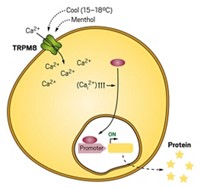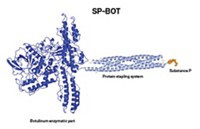Advertisement
Grab your lab coat. Let's get started
Welcome!
Welcome!
Create an account below to get 6 C&EN articles per month, receive newsletters and more - all free.
It seems this is your first time logging in online. Please enter the following information to continue.
As an ACS member you automatically get access to this site. All we need is few more details to create your reading experience.
Not you? Sign in with a different account.
Not you? Sign in with a different account.
ERROR 1
ERROR 1
ERROR 2
ERROR 2
ERROR 2
ERROR 2
ERROR 2
Password and Confirm password must match.
If you have an ACS member number, please enter it here so we can link this account to your membership. (optional)
ERROR 2
ACS values your privacy. By submitting your information, you are gaining access to C&EN and subscribing to our weekly newsletter. We use the information you provide to make your reading experience better, and we will never sell your data to third party members.
Synthetic Biology
Cool-mint-triggered gene switch makes insulin in diabetic mice
Synthetic biologists design genetic circuit made from all human components to expresses therapeutic proteins
by Alla Katsnelson, special to C&EN
July 11, 2019

Menthol provides a cooling minty sensation to chewing gum, cough medicine, and tooth paste. Now researchers want to use it to trigger the production of insulin or other therapeutic proteins in engineered human cells.
The team of scientists report a gene circuit that consists entirely of human genes and proteins and is activated by menthol to control the synthesis of a desired protein (Nat. Med. 2019, DOI: 10.1038/s41591-019-0501-8). Scientists could engineer cells with this circuit and then doctors could implant those cells into patients who need the specific therapeutic protein. Most gene and cell therapies developed to date have contained components from bacteria or yeast, which makes them vulnerable to attack and destruction by our immune systems, says Martin Fussenegger of the Swiss Federal Institute of Technology, Zurich. His team’s fully human switch should be able to deliver its therapeutic punch without incurring the wrath of the immune system.
Fussenegger and his team settled on menthol as the molecular cue to switch on their gene circuit because it is both highly specific and can be delivered in multiple ways. “It’s a very convenient trigger molecule because we only encounter it if we want to be exposed to it,” he says.
Our sensory system picks up menthol’s cooling sensation through a specialized receptor called TRPM8. When menthol activates TRPM8, the receptor’s pore opens and allows a flood of calcium ions into the cell. In cells engineered with the new gene circuit, this calcium torrent revs up a genetic element called a promoter, which then turns on the gene for the desired therapeutic protein.
The researchers created cells in which their menthol gene circuit was hooked up to the gene that produces insulin. They then implanted the cells in diabetic mice. When they rubbed the skin of the mice with menthol, the engineered cells made insulin and regulated the animals’ blood sugar. “That was our first proof of concept that the menthol system could work in animals,” Fussenegger says. He envisions that people with implants of such cells could brush their teeth with menthol toothpaste or dab on some essential oil containing the minty compound to activate insulin production instead of giving themselves an injection.
In another test of the circuit, the team created cells with the gene switch controlling expression of a protein that sponges up myostatin, a molecule that drives muscle degradation. The engineered cells successfully treated mice with a muscle wasting disease.
Researchers have previously made these kinds of trigger-driven gene switches, but this is the first such gene circuit made exclusively from human parts, says Joshua Leonard, a synthetic biologist at Northwestern University. “It’s an important first step.”
Fussenegger’s team hopes to eventually test the insulin-making cells in humans, possibly by partnering with a pharmaceutical company.





Join the conversation
Contact the reporter
Submit a Letter to the Editor for publication
Engage with us on Twitter